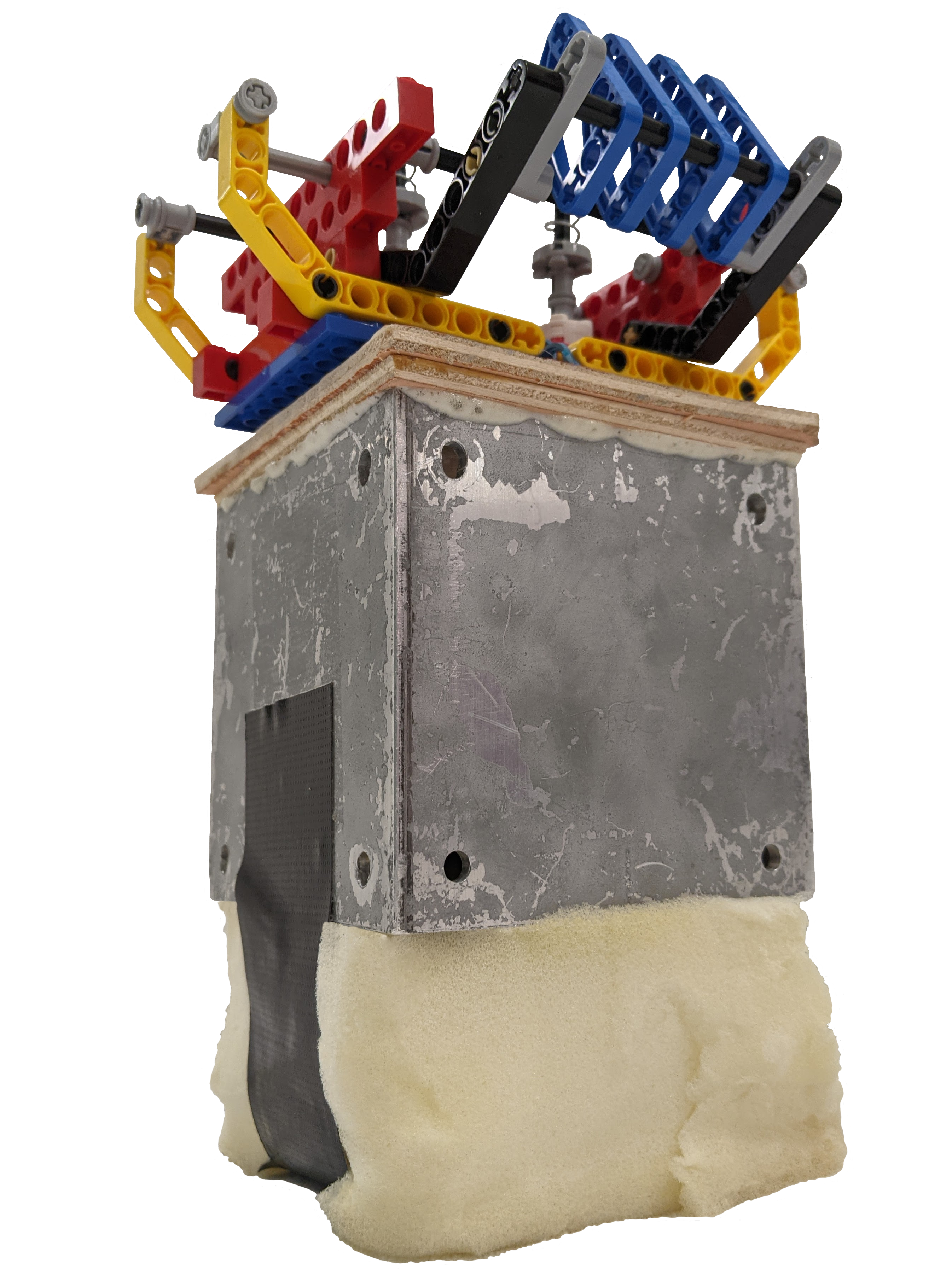MagnITO-Sat
The MagnITO-Sat name was actually given to two design iterations of Nanosatellites meant to test the concept of using the Earth's magnetic field to keep satellites in orbit for longer.
The first design was a 4x4x4 inch CubeSat with an antenna extending out from it. While the satellite would be fitted with many of the same sensors as Taylor's other Nanosats, the purpose of the antenna was unique. It was designed to employ a phenomenon known as the Phantom Loop--a cyclical flow of electrons guided by a metal conductor--to produce both power and thrust, which could keep the satellite at a higher altitude for longer and extend its lifetime. The CubeSat model for this magnetically-boosted satellite was still relatively early in its design phase (hence the foam cushion and LEGO-built suspension system shown right) when along came a new opportunity--in the form of a slice of bread.
Well, it was more machine and metal than wheat and water, but the novel ThinSat design developed by NearSpace Launch (and supported by Bob Twiggs, one of the fathers of the CubeSat concept) is about the same size as a slice of your favorite wholegrain! This new tiny satellite design, classified as a Picosatellite, made the prospect of orbital launch even more attainable for the MagnITO-Sat team--at the same time giving them an exciting idea. With the new ThinSat model being smaller and cheaper than the previous CubeSats, the idea of replacing the antenna with a wire tethering two ThinSats together was born, and a cooperative effort between Taylor and the Muncie PhyXTGears First Robotics Team 1720 began. Both teams would prepare their own ThinSat for launch, and a wire would connect the two satellites to each other and use the magnetic field of the Earth to keep the twin ThinSats in orbit a while longer.
However, the tethered twin ThinSat concept did not receive approval for launch in the end--at least not as such (see the next section!). Highlights of both students and faculty who worked on the MagnITO-Sats include the zero-gravity deployment test, conducted on the CubeSat model, in Taylor's Euler Science complex, and the camaraderie of working alongside the PhyXTGears team on the paired ThinSats.
Faculty mentor: Bill Bauson
Read More



